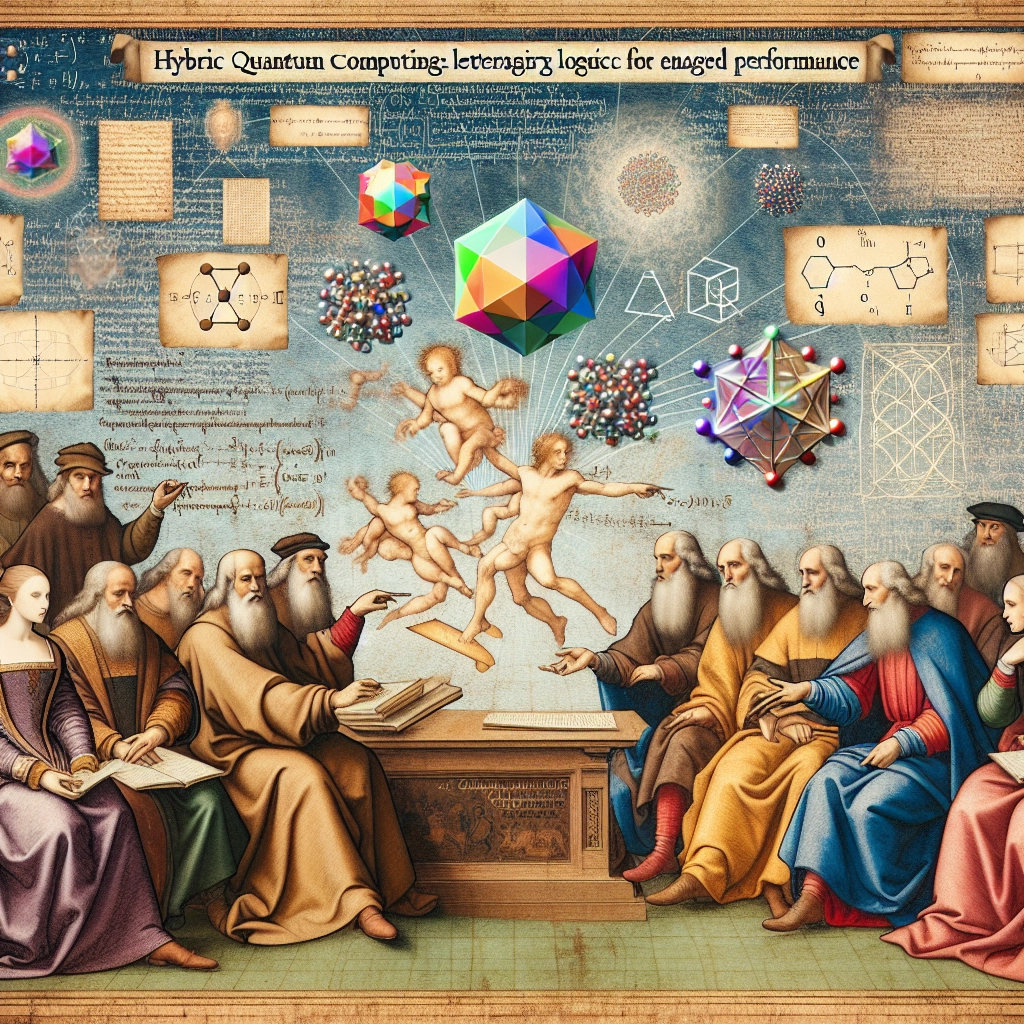
- Published on
- Authors

- Name
- ric de yuga 😄
🌌 Introduction to Hybrid Quantum-Classical Computing with Ternary Logic
In the pursuit of pushing the boundaries of computational power, researchers are exploring the integration of quantum and classical computing paradigms. A promising approach is the use of ternary logic, where each computational unit can exist in three states: -1, 0, and 1. This post delves into the theory behind building a hybrid quantum-classical computer using this ternary system, aiming to significantly enhance the speed and efficiency of computations.
🔍 Ternary Logic: A Step Beyond Binary
Understanding Ternary States
Traditional binary computing relies on bits that represent either 0 or 1. In contrast, ternary logic introduces a third state, enabling each unit (termed as a 'trit') to represent -1, 0, or 1. This expansion allows for more information to be processed per computational cycle, potentially leading to increased computational density and speed.
Quantum and Classical Integration
Hybrid quantum-classical computing combines the strengths of classical processors and quantum processors. Classical processors handle deterministic tasks efficiently, while quantum processors leverage quantum superposition and entanglement to tackle complex, probabilistic problems. By integrating ternary logic, this hybrid model can optimize the flow and processing of information, leading to more robust computational frameworks.
🛠 Building the Hybrid Quantum-Classical System
Quantum Ternary Logic Units (QTLUs)
The core component of this hybrid system is the Quantum Ternary Logic Unit (QTLU). These units operate on quantum states that are designed to represent -1, 0, and 1. The states can be mapped as follows:
- Negative Voltage (-1): Corresponds to a specific quantum state, potentially a superposition or specific spin orientation.
- Positive Voltage (1): Another distinct quantum state, opposite to the negative voltage state.
- Off (0): Represents the absence of a state or a neutral position in the quantum system.
Classical Interface
To interface with classical computing components, digital-to-ternary converters (DTTs) are used. These converters translate binary data into ternary format for processing within the QTLUs and then convert results back to binary for integration with classical systems.
Computational Workflow
- Initialization: Data is loaded and converted from binary to ternary format using DTTs.
- Processing: QTLUs perform quantum computations using ternary logic, exploiting quantum parallelism to explore multiple solutions simultaneously.
- Conversion: Results are converted back to binary format for further classical processing or output.
✨ Potential Advantages of Ternary Hybrid Systems
Increased Information Density
Ternary systems can represent more information per unit compared to binary systems. This increased density can lead to higher data throughput and more efficient memory usage.
Enhanced Computational Speed
By leveraging quantum parallelism and the additional state in ternary logic, hybrid systems can potentially perform calculations faster than traditional binary systems, particularly for complex and parallelizable tasks.
Energy Efficiency
Ternary systems can reduce the number of required logic operations, leading to potential energy savings. This is particularly advantageous in quantum systems where maintaining coherence and minimizing noise are critical.
🌐 Challenges and Considerations
Hardware Implementation
Developing reliable hardware to support ternary logic and quantum states is a significant challenge. Current quantum computing technologies primarily focus on binary qubits, and adapting these to support ternary states requires substantial innovation in quantum circuitry and error correction.
Error Rates and Decoherence
Quantum systems are susceptible to errors and decoherence. Ternary logic introduces additional complexity in maintaining coherence across three states. Robust error correction methods and noise reduction techniques are essential to ensure reliable computations.
Integration with Classical Systems
Seamlessly integrating ternary quantum components with existing binary classical systems poses significant architectural challenges. Efficient DTTs and hybrid processing algorithms are crucial for achieving practical and performant hybrid systems.
🌌 Conclusion
Hybrid quantum-classical computing using ternary logic represents an exciting frontier in computational technology. By extending beyond binary logic, this approach aims to harness the full potential of quantum mechanics and classical processing, paving the way for faster, more efficient, and more powerful computing systems. While challenges remain, ongoing research and innovation hold the promise of transforming our computational capabilities and addressing problems that are currently beyond our reach.
📜 References
- Farhi, E., Goldstone, J., Gutmann, S., & Sipser, M. (2000). "Quantum Computation by Adiabatic Evolution." arXiv:quant-ph/0001106.
- Aharonov, D., van Dam, W., Kempe, J., Landau, Z., Lloyd, S., & Regev, O. (2004). "Adiabatic Quantum Computation is Equivalent to Standard Quantum Computation." arXiv:quant-ph/0405098.
- Feynman, R. P. (1982). "Simulating Physics with Computers." International Journal of Theoretical Physics, 21(6-7), 467-488.
By exploring and refining these hybrid systems, we stand on the brink of a new era in computing, where the synergy of quantum and classical technologies can unlock unprecedented capabilities and solve some of the most complex challenges facing our world.
